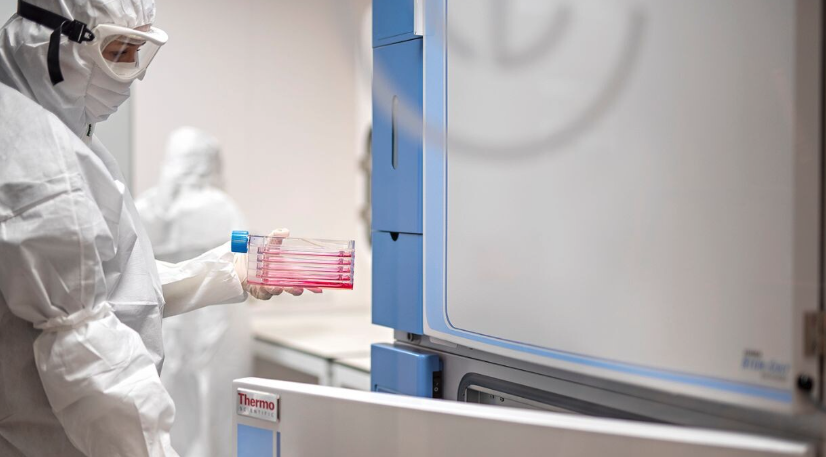In the world of modern medicine, few breakthroughs have generated as much excitement as the potential of stem cell therapies. Recently, a pioneering biotech company announced it had reached a milestone that could change the way healthcare approaches chronic diseases, injury repair, and aging itself. By achieving unprecedented levels of mesenchymal stem cell (MSC) production from a single donation, the company believes it is on the verge of making regenerative treatments widely accessible. This, they claim, represents an “inflection point” — a moment where the science, technology, and economics of stem cell therapy begin to align for mass adoption.
1. The Power of Mesenchymal Stem Cells
Mesenchymal stem cells are naturally occurring in the human body and are found in bone marrow, fat tissue, and other sources. They have the unique ability to differentiate into a variety of cell types, including bone, cartilage, and muscle. Beyond their regenerative capabilities, they also play a key role in reducing inflammation and modulating the immune system.
For decades, scientists have recognized their potential for treating conditions such as osteoarthritis, cardiovascular damage, autoimmune diseases, and certain neurological disorders. However, despite promising early results, the application of MSCs in mainstream medicine has been limited due to challenges in producing them in large quantities while maintaining safety and quality.
2. Overcoming the Production Bottleneck
The company behind this breakthrough has focused its research on scaling MSC production without compromising their therapeutic properties. On a recent collection day, its team harvested more than four billion cells from just 50 milliliters of bone marrow donated by a healthy young volunteer. That amount of raw material is enough to create around two hundred therapeutic doses — a yield far greater than what has typically been achieved.
The process begins with careful donor selection, prioritizing individuals between the ages of 18 and 30 who are in excellent health. The bone marrow extraction is minimally invasive and takes only minutes. From there, the cells are isolated, cultured, and expanded in controlled laboratory conditions until the target volume is reached.
3. Why This is an “Inflection Point”
The term “inflection point” is used in business and science to describe a critical moment when gradual progress shifts into rapid acceleration. In the context of stem cell medicine, it means that decades of foundational research, combined with recent advances in manufacturing and regulatory approval, are converging to make industrial-scale production possible.
Until now, the high cost of stem cell treatments has kept them out of reach for most patients. By dramatically increasing supply and lowering production costs, these therapies could soon be available to a much larger population. Experts believe this could have an effect on chronic diseases similar to what antibiotics once did for infectious diseases — not just treating them, but in some cases preventing them altogether.
4. The Journey From Discovery to Mass Application
The foundation for this progress was laid years ago, when researchers demonstrated that stem cells could be collected from healthy donors, expanded in the lab, and then used to treat unrelated patients. Early clinical trials proved MSCs could safely reduce severe immune reactions and promote healing.
However, moving from proof-of-concept to mass production required solving several challenges:
Consistency: Every batch must meet strict quality control standards.
Scalability: Facilities must be able to process large volumes efficiently.
Regulation: Approvals must be obtained to ensure patient safety and legal compliance.
Cost: The process must be financially sustainable for healthcare systems.
5. Advancing Manufacturing Technology
Currently, much of the production process is done in sterile cleanrooms by trained technicians. While effective, this method is labor-intensive and costly. To overcome this, the company is developing large-scale bioreactors — enclosed systems that can cultivate stem cells in automated, precisely controlled environments. These bioreactors can maintain ideal growth conditions, monitor cell health in real time, and significantly reduce the need for manual handling.
According to projections, full-scale bioreactor facilities could be operational within the next few years, potentially cutting production costs by a factor of ten. This would allow not only hospitals and research centers but also private clinics worldwide to offer MSC-based treatments at a fraction of today’s prices.
6. Expanding Clinical Applications
Mesenchymal stem cells are being investigated for a wide range of conditions:
Musculoskeletal Injuries: Repairing torn ligaments, cartilage damage, and stress fractures.
Cardiovascular Health: Improving heart function after heart attacks or chronic disease.
Neurodegenerative Disorders: Supporting neural repair in diseases like Parkinson’s and Alzheimer’s.
Autoimmune Conditions: Modulating immune responses in disorders such as rheumatoid arthritis or Crohn’s disease.
Anti-Aging and Wellness: Slowing age-related cellular decline and promoting tissue vitality.
Early trial results have shown encouraging safety and efficacy profiles, though larger studies are still needed to fully validate the benefits for each condition.
7. The Cost and Accessibility Challenge
Today, receiving a full MSC treatment can cost tens of thousands of dollars, placing it firmly in the realm of medical tourism and high-end private care. Meanwhile, donors providing the biological material are typically compensated only modestly. This imbalance raises important questions about fairness, access, and long-term sustainability.
The company’s leadership argues that as manufacturing capacity increases, these prices will drop sharply. They envision a future in which stem cell treatments are as common as certain surgical procedures today — covered by insurance and available in public hospitals. Achieving this will require not only technological progress but also political will and healthcare policy reform.
8. Ethical Considerations
With the prospect of mass production come ethical responsibilities. Donor recruitment must be transparent, voluntary, and safe. Cell processing must be free of contamination and genetic manipulation unless specifically approved for research purposes. There is also the question of global equity: will developing countries have the same access to these therapies, or will they remain concentrated in wealthier nations?
Ethics boards, public health agencies, and international regulators will need to collaborate to ensure that scaling stem cell medicine does not replicate the inequalities seen in other high-tech treatments.
9. Global Momentum in Regenerative Medicine
The breakthrough achieved by this startup is part of a larger global movement toward regenerative healthcare. Across the world, research teams are combining biology, engineering, and artificial intelligence to design better culture systems, predict optimal growth conditions, and standardize quality checks. The goal is to create an interconnected ecosystem where innovation in one part of the world can be rapidly adopted elsewhere.
This collaborative spirit mirrors the development of vaccines, where shared data and manufacturing expertise accelerated global rollout. If stem cell production can follow a similar model, it may reach large patient populations much faster.
10. Looking Ahead: The Next Decade
If current trends continue, the next ten years could see stem cell treatments shift from niche, experimental options to standard medical practice. Possible developments include:
Preventive Therapies: Administering MSCs to at-risk individuals before disease symptoms appear.
Personalized Regenerative Care: Tailoring cell therapies to an individual’s genetic and health profile.
Combination Therapies: Using MSCs alongside gene editing, biomaterials, or immune-based treatments for synergistic effects.
Global Supply Chains: Distributed manufacturing hubs to ensure local availability and reduce logistical costs.
Such progress could reshape healthcare economics, shifting the focus from managing chronic illness to actively repairing and maintaining bodily function.
Conclusion
The announcement of large-scale mesenchymal stem cell production marks a critical turning point in modern medicine. It signals that regenerative therapies are moving beyond laboratory promise and into the realm of everyday clinical practice. While challenges remain in cost, ethics, and regulation, the pathway toward mass accessibility is becoming clearer.
If history is any guide, moments like this — where a technology transitions from scarcity to abundance — can have transformative effects on society. Just as antibiotics revolutionized the fight against infectious diseases, stem cells may soon redefine how we prevent, treat, and even reverse chronic and degenerative conditions. The coming years will reveal whether this bold vision becomes reality, but one thing is certain: the future of medicine is about to change forever.




